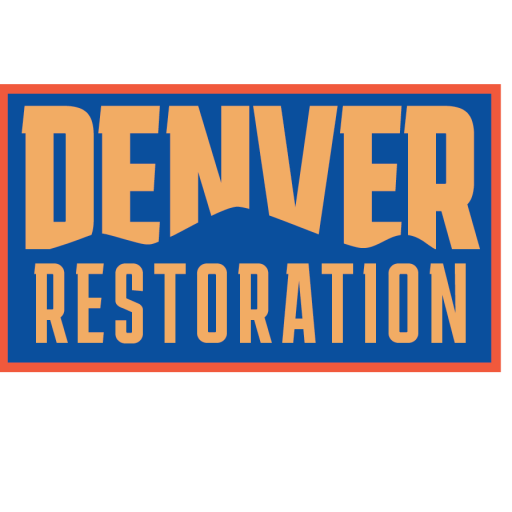Storm Protection: Safeguarding Your Home From Unforeseen Disasters
Weather is unpredictable. One minute you’re experiencing a light drizzle, the next moment a vicious storm is uprooting trees and wreaking havoc on residential properties. Protecting your home from such disasters becomes paramount. This post will delve into the intricacies of storm protection and outline actionable insights to prevent storm damage and maintain home safety.
Understanding Storm Damage and Its Consequences
When a storm sweeps through an area, it can be a catastrophic event that leaves affected homeowners grappling with the aftereffects. The consequences of severe storms can range from trivial damage like fallen branches, all the way to significant structural hindrances such as shattered windows, burst pipes, or even collapsed roofs. In addition, post-storm scenarios often present risky health threats due to mold growth, waterborne diseases, and potential fire hazards from electrical issues.
Emphasizing home safety is crucial to prevent storm damage. Proper storm protection is not just about safeguarding physical property, but also offering peace of mind to homeowners. This leads us to our first point of action: damage assessment and estimation.
Damage Assessment and Estimation: Knowing the Risks
To formulate a solid storm protection plan, you must first identify potential vulnerabilities in your home. The process of damage assessment involves a detailed examination of your home to estimate the risk of storm damage. Areas such as foundations, roofing, pipe systems, and electrical wiring need close attention. Special focus is to be given to prevent mold growth in the aftermath of a storm.
Storm Protection Techniques and Equipment
Storm protection is not a one-size-fits-all approach. Depending on your geographical area, the characteristics of your home, and the potential risks identified during the assessment stage, various techniques and equipment can be employed to prevent storm damage. These can range from simple measures—like trimming overgrown trees near windows—to complex steps like retrofitting the home to withstand extreme weather conditions.
FEMA details some of these mitigation and retrofitting measures that can be instrumental in protecting your property against damaging storms. Incorporating these measures into your home safety plan could save you from expensive damage repair costs.
Home Safety and Insurance: Legal Compliance and Coverage
Further strengthening your storm protection strategy involves ensuring legal compliance and comprehensive insurance coverage. Every location has building codes and regulations that guide construction and renovation practices. If your home is not compliant, it’s not just a legal issue—it can also be a safety risk.
When it comes to insurance, the common homeowner’s policy may not cover all types of storm damage. Hence, understanding the fine-print of your insurance policy and making necessary additions can be a smart move.
Restoration Services: Rapid Reaction to Flooding and Other Perils
Despite the best proactive measures, sometimes storm damage can still occur. In such cases, timely response is crucial to prevent the situation from worsening. Rapid response restoration services come in handy in these scenarios, helping to restore normalcy in the shortest possible time.
The Bottom Line
Investing in comprehensive storm protection and home safety is more than just a building maintenance routine. It’s a vital part of ensuring your family’s security and peace of mind. Storms may come and go, but with the right preparation, you can fortify your home against damage, keep your loved ones safe, and sleep a little easier when storm clouds gather.
Remember, when dealing with storm protection and safety, there’s no such thing as being overly prepared. After all, it’s better to prevent the storm from damaging your home than to face the harsh consequences later on.
When Disasters Strike: Crisis Management and Quick Recovery
Unfortunately, despite all precautionary measures, unforeseen disasters can strike and cause significant damage to your house. This is where crisis management and quick recovery processes come into play. It involves assessing the damage prompt after-storm restoration measures and constant communication with homeowners to keep them informed about the recovery process.
Managing the Crisis: Key Strategies Post-Storm
Crisis management deals with mitigating the effects of a disaster once it has occurred. It starts with an immediate inspection to measure the extent of the damage and then proceeds with necessary restoration measures. During this time, it is crucial to maintain clear lines of communication with affected homeowners. Homeowners may feel stressed and anxious post-disaster. Thus, continual communication about the restoration process can go a long way in aloofing homeowner’s anxiety, giving them the assurance that restoration is on track, and their home will soon return to the previous state.
Moreover, a proper crisis management approach involves not just damage mitigation but also prepping for future events. Mitigation measures can be reinforced to resist similar future occurrences, helping to minimize damages to the home when and if another storm strikes.
Post-Storm Restoration: The Road to Recovery
Restoration post-storm is a multi-step procedure which includes the cleaning and repair of damaged property, eliminating health hazards, and re-establishing the home to its former state. This process also covers identifying and rectifying potential threats that could lead to future damage.
The key is to act promptly. The quicker the restoration process starts, the higher the chances are of preventing further damages and high costs. During this time, the prime focus is on maintaining safety standards & precautions while restoring the damaged property swiftly and efficiently.
For homes severely affected by water damage or flooding post-storm, professional board-up services become essential. They help to prevent further damages and avoid unwanted access to your property.
The Role of Restoration Services in the Wake of a Disaster
Essentially, the goal is to restore your property to its pre-storm condition as quickly as possible while ensuring proper safety measures are meticulously followed. Tailored expert lead abatement services aid in recovering from fire damage that may result from electrical faults caused by storms or flooding. These skilled restoration services operate with a neutral third-party perspective that ensures the provision of non-biased damage assessments, hence facilitating fair settlements between property owners and insurance companies.
These restoration services include expertise in various fields like water extraction & drying, mold remediation, dehumidification, and odor control. Hence, the right choice of a service provider equips you with comprehensive recovery from any damage incurred.
Keeping Business Running: Recovery Steps for Business Owners Post-Disaster
Business owners must be prepared for storms and unexpected situations. Ensuring continuity of operations and minimal disruption to the business is crucial. This process involves developing a recovery strategy, creating the necessary communication channels, and getting the appropriate insurance coverage.
To facilitate business owners in their recovery, detailed action plans like quick and easy recovery steps become crucial. These guides provide an extensive look into efficient recovery mechanisms, ensuring that businesses bounce back as quickly as possible.
Maintaining Environmental Safety during Restoration
Restoration processes should adhere to environmental safety rules, posing the least impact on our surroundings. This includes proper waste disposal and recycling wherever possible. Following these guidelines ensures the safety of not just the residents but also the environment.
In the face of storm hazards and their aftermath, ensuring the safety of your property is of paramount importance. Remember, being prepared for a storm is not just about getting your property ready to endure the impacts. It is as much about knowing how to manage the crisis effectively and restore normalcy quickly and efficiently.
Overall, the aim is to ensure the maintenance of a secure living environment that safeguards your family’s safety and provides them with peace of mind in stormy times. With effective storm protection measures in place, homeowners can confidently face any weather adversity, knowing they have done their utmost to protect their home and family. Essential preventive measures can take your preparedness to the next level, ensuring that your home remains safe and protected regardless of the weather outside.
Storms are unpredictable, but your readiness for them should not be. Solid preparation and materials, the right strategies in place, and prompt recovery procedures ensure that you are ready when the storm strikes, and your dream home stays unharmed.

